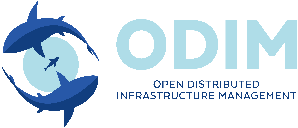| This wiki is for developers of ODIM, an open source software platform that delivers means of distributed physical infrastructure lifecycle management, across telecom and enterprise edge-to-core infrastructure deployments and based on the industry standard DMTF Redfish API and Model specification. (CLICK ON THE PROJECT LOGO TO THE LEFT TO BE TAKEN TO THE OFFICIAL ODIM COMMUNITY PAGE) |
|---|
LATEST NEWS...
| Expand |
|---|
| title | ODIM seed code released on https://github.com/ODIM-Project/ODIM |
|---|
|
|
| Children Display |
|---|
| style | h6 |
|---|
| page | Latest Release |
|---|
| sort | title |
|---|
| reverse | true |
|---|
|
Getting Started with ODIM
| Children Display |
|---|
| style | h6 |
|---|
| page | Documenting ODIM Development |
|---|
|
| Children Display |
|---|
| depth | 1 |
|---|
| style | h6 |
|---|
| page | Technical Steering Committee |
|---|
| sort | title |
|---|
|
| Children Display |
|---|
| depth | 1 |
|---|
| style | h6 |
|---|
| page | Release Management |
|---|
|
| Children Display |
|---|
| style | h6 |
|---|
| page | Research & Development |
|---|
|
Know your spaces
Everything your team is working on - meeting notes and agendas, project plans and timelines, technical documentation and more - is located in a space; it's home base for your team.
A small team should plan to have a space for the team, and a space for each big project. If you'll be working in Confluence with several other teams and departments, we recommend a space for each team as well as a space for each major cross-team project. The key is to think of a space as the container that holds all the important stuff - like pages, files, and blog posts - a team, group, or project needs to work.
Know your pages
If you're working on something related to your team - project plans, product requirements, blog posts, internal communications, you name it - create and store it in a Confluence page. Confluence pages offer a lot of flexibility in creating and storing information, and there are a number of useful page templates included to get you started, like the meeting notes template. Your spaces should be filled with pages that document your business processes, outline your plans, contain your files, and report on your progress. The more you learn to do in Confluence (adding tables and graphs, or embedding video and links are great places to start), the more engaging and helpful your pages will become.
Learn more by reading Confluence 101: organize your work in spaces
Quick navigation
When you create new pages in this space, they'll appear here automatically.
Useful links
| Link | Description |
|---|
| Confluence 101: organize your work in spaces | Chances are, the information you need to do your job lives in multiple places. Word docs, Evernote files, email, PDFs, even Post-it notes. It's scattered among different systems. And to make matters worse, the stuff your teammates need is equally siloed. If information had feelings, it would be lonely. But with Confluence, you can bring all that information into one place. |
| Confluence 101: discuss work with your team | Getting a project outlined and adding the right content are just the first steps. Now it's time for your team to weigh in. Confluence makes it easy to discuss your work - with your team, your boss, or your entire company - in the same place where you organized and created it. |
| Confluence 101: create content with pages | Think of pages as a New Age "document." If Word docs were rotary phones, Confluence pages would be smart phones. A smart phone still makes calls (like their rotary counterparts), but it can do so much more than that |
Tasks

